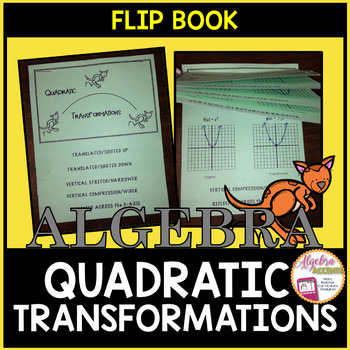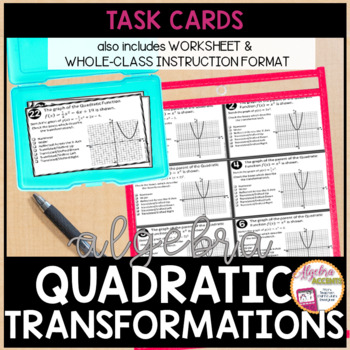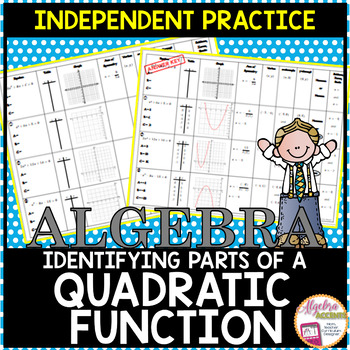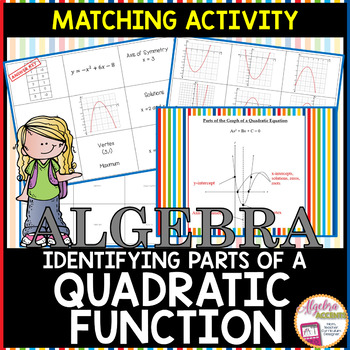After we completed the attributes and solving by graphing, we completed a project with Ozobots. Read about it in detail here.
Here is a video of the outcome of the project.
After completing the project I realized the need for more practice in graphing. It has been an ongoing lesson in stoicism to have them graph accurately and not just sketch from the calculator!! I used the following worksheet which you may get for FREE here.
After this we needed to cover a few more concepts. The next we addressed was Quadratic Transformations. I completed a foldable inspired by the Teachers Pay Teachers Activity below.
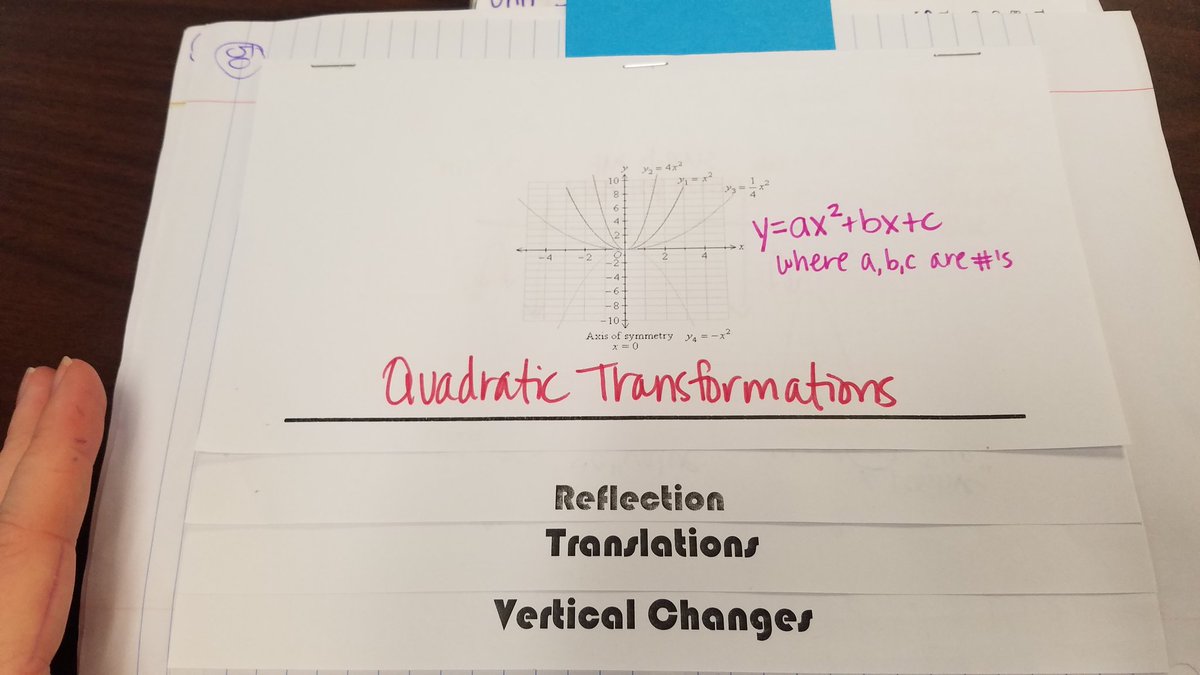
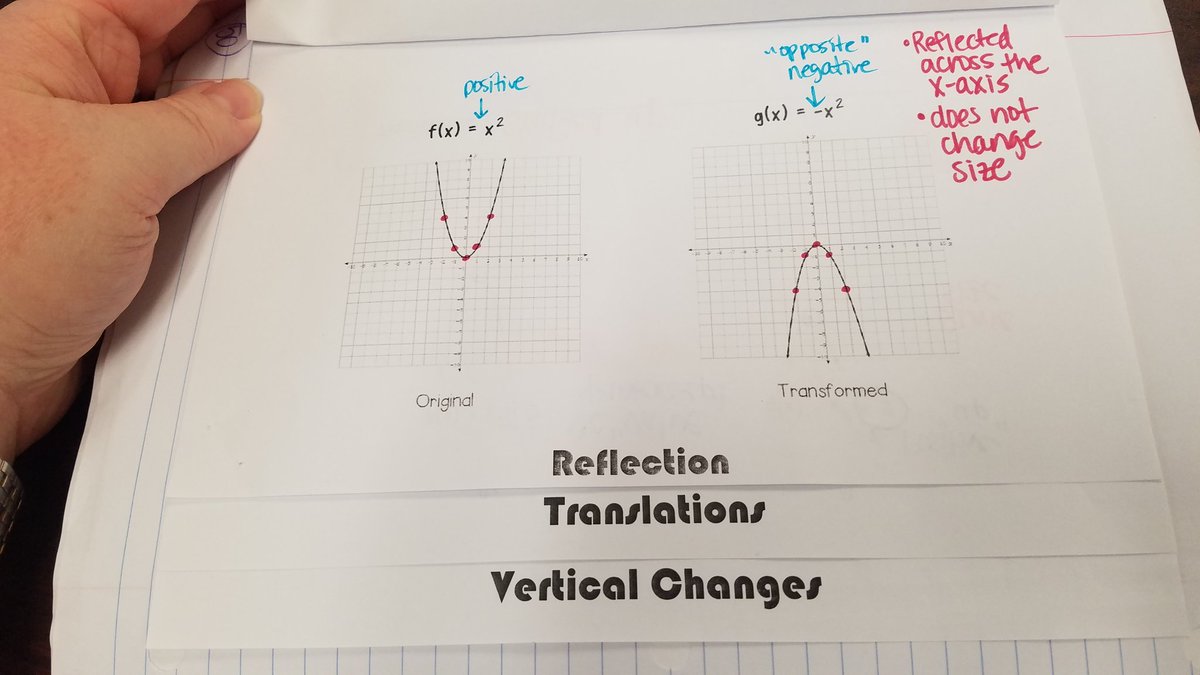
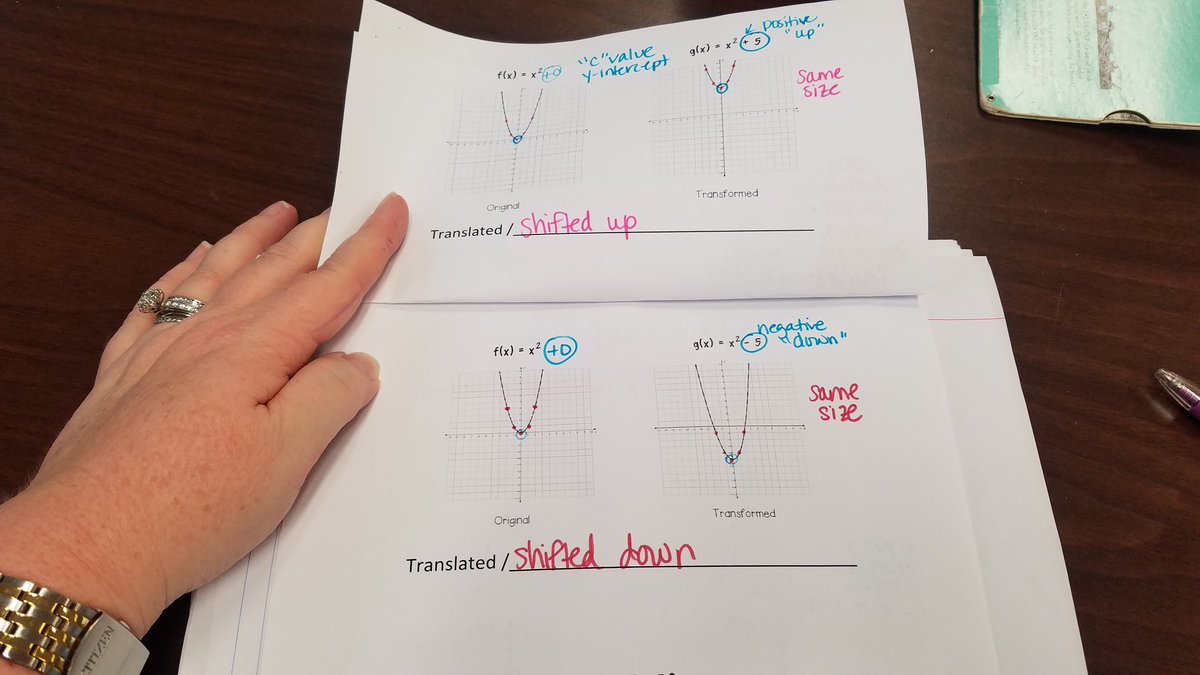
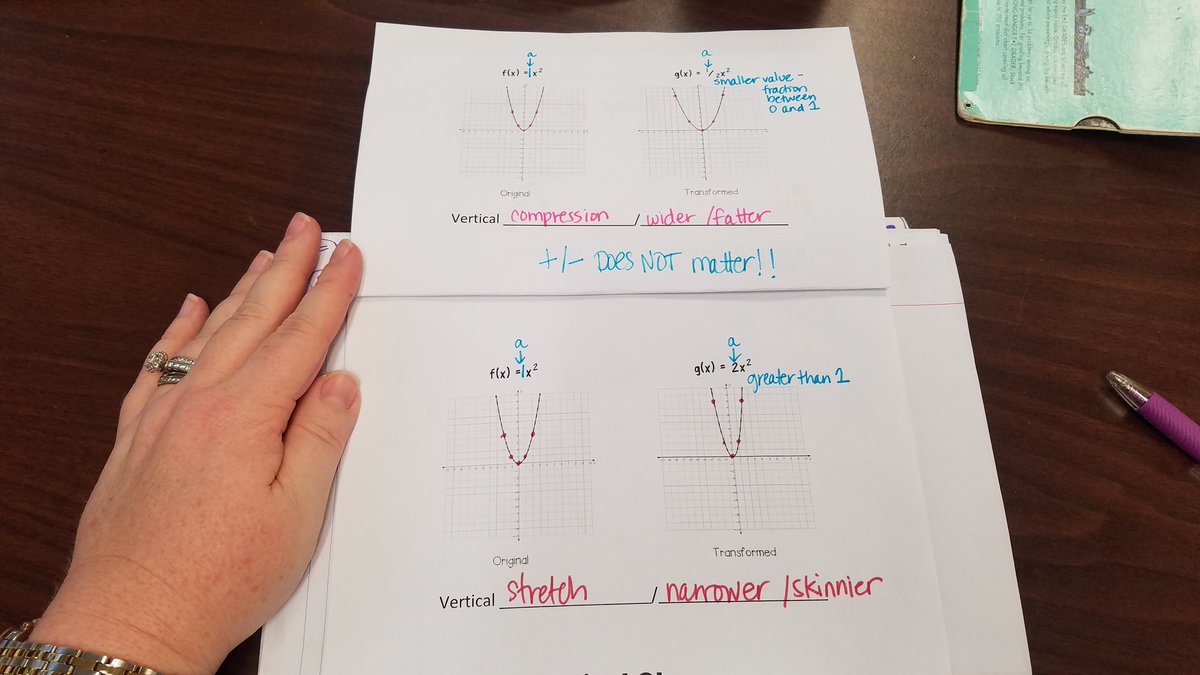
I would love to see any resources you might have for transformations. This one was done before the TEKS change so the horizontal change will be added before next year. I'll edit them for the future and link them here.
I followed it up with this assignment from Teachers Pay Teachers Algebra Accents. Several years ago, I purchased her curriculum and found it to be worth every penny!
I printed the kids 12 task cards to complete for their practice. This was a great transformations assignment and I highly recommend the $3 investment! It was the perfect activity for transformations!!
Then we went back to good ol' factoring!! Solving by factoring was an algebra concept that often got skipped over a little. We were usually cramming this in right before our standardized test and just did not have a lot of time to work on it. Since my kids already had the factoring part of it earlier, I just needed notes emphasizing the connection to quadratic solutions. Back to the ever dependable and ah-maz-ing Mrs. Sarah Carter at Math=Love to have these available!!

I created my own typed notes as we do a lot of fill in the blank notes to emphasize certain vocab and save writing time. Get the word version here and the PDF here for FREE!
I broke these notes into 2 classes/presentations too. One class we did the top and a=1 examples. Many of my students did not complete their factoring practice assignments so I wanted to make sure they all had time and were working on this concept. After that part of the notes I had created another Clue activity but tailored it to my class and school. They really seemed to get a kick out of it and even high schoolers LOOOOOVVVVVEEEE their name on a worksheet! Get the word version here and the PDF here.
This card template was adapted from this Karen Cookie Jar Post. It is different than the factoring one I previously shared.
Next class, I presented the other 2 examples (a>1) and gave them another hidden picture activity. I made it a little less 'intense' than last time (the factoring one) and even let one of my classes give me picture ideas. The word version uses my new favorite free font, KG Payphone which you can download for FREE here! You may download the Word version here and PDF here for FREE!
I mix my mystery pictures up a bit to where I try not to create a pattern that you can see in the letters!
Then here it comes..... the one... the ultimate... the one way that works for any quadratic.... the QUADRATIC FORMULA!!! I love it, probably because I'm a math nerd but I'm gonna make 'em do it! We sing, we sing a lot during this time! I even have this activity for extra credit where they have to sing it to other teachers or staffers at school. My department head and I once had a sing off heard 'round the school.
Download this here if you'd like to edit for your class. I am of the Pop Goes the Weasel school of melody too, just so you know! There is quite a debate on the versions, which Sarah Carter writes about on her blog here. I also used this post to create my new notes for this year.
My students have all had Algebra 1 so the Quadratic Formula is nothing new. I wanted to create a little different note set to make it a bit more interactive. Enter, Sarah Carter, and we have a tangram Quadratic formula puzzle for our notes! I'm loving these. Since my students have already had Algebra, and likely the exact same notes, I wanted to change it up a little.
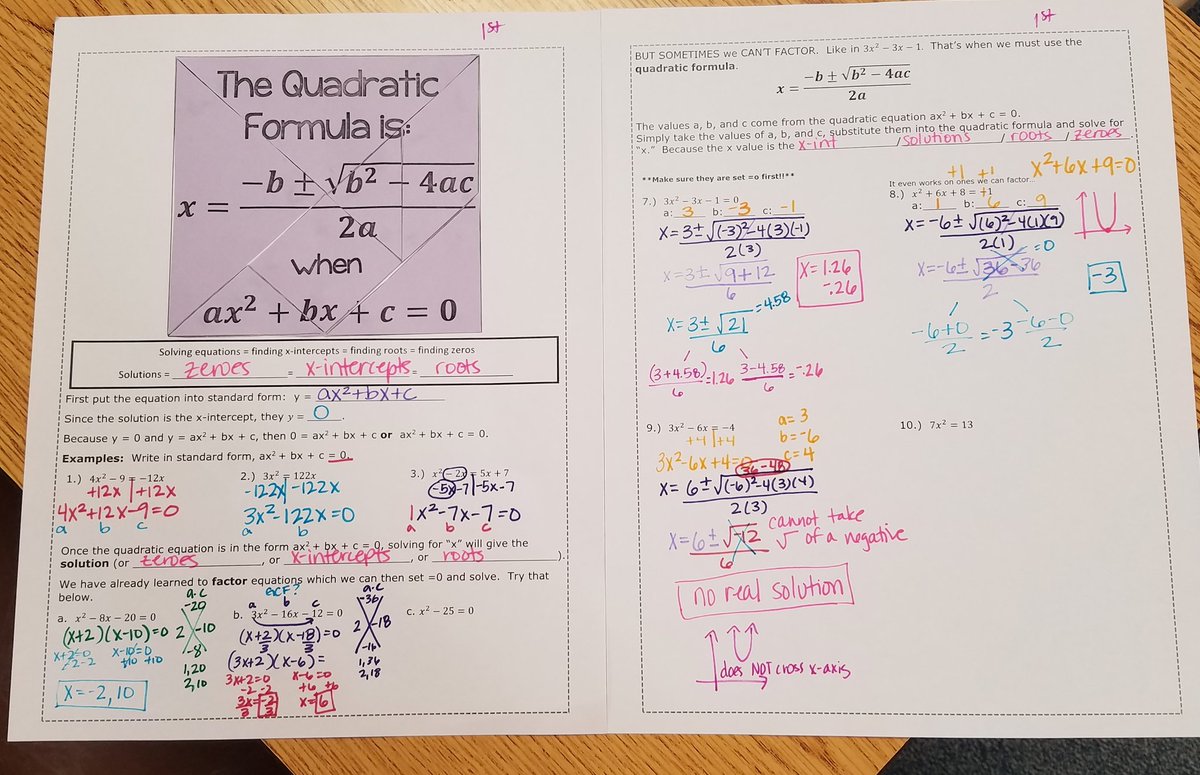
Download these notes here and the tangram (2 per page) here. Get the version for Algebra 1 here.
Now for practice we have used this worksheet in the past for Algebra 1.
Last year, I wanted to mix it up a little and purchased this riddle activity on Teachers Pay Teachers. I prefer choosing activities that they have instant assessment to check their work. Not all but many of my activities are. I feel for students that work so hard and are doing something wrong the whole time, especially when they are at home working on it and it's something as involved as the quadratic Formula!

For my students this year, I created a Mad Lib Scavenger Hunt type activity. I will be writing about this at length later but you may download the Student WS for the activity here in Word (you will need the Jedi Font found here for FREE) or the PDF here. The accompanying wall sheets in Word here or PDF here! I have previously written about how I create my scavenger hunts here. This is the same idea except they are completing a Mad Lib.
These are a combination of methods to solve as well, not just Quadratic Formula (actually there are only 2 you have to use the Formula for but you can edit for whatever you need).
Download it here for FREE!
For any keys, please feel free to email me at camfan54@att.net from your school or professional account. I've had students try and email for keys in the past but luckily their email said student!

Download these notes here and the tangram (2 per page) here. Get the version for Algebra 1 here.
Now for practice we have used this worksheet in the past for Algebra 1.
Last year, I wanted to mix it up a little and purchased this riddle activity on Teachers Pay Teachers. I prefer choosing activities that they have instant assessment to check their work. Not all but many of my activities are. I feel for students that work so hard and are doing something wrong the whole time, especially when they are at home working on it and it's something as involved as the quadratic Formula!

For my students this year, I created a Mad Lib Scavenger Hunt type activity. I will be writing about this at length later but you may download the Student WS for the activity here in Word (you will need the Jedi Font found here for FREE) or the PDF here. The accompanying wall sheets in Word here or PDF here! I have previously written about how I create my scavenger hunts here. This is the same idea except they are completing a Mad Lib.
These are a combination of methods to solve as well, not just Quadratic Formula (actually there are only 2 you have to use the Formula for but you can edit for whatever you need).
Since these can be more than one method to solve, I created the activity for them to complete to see how both factoring and Quadratic Formula can be used. I know there are other methods but these are the only 2 taught in Math Models.
For any keys, please feel free to email me at camfan54@att.net from your school or professional account. I've had students try and email for keys in the past but luckily their email said student!
Right now this is the rest of my Quadratic Unit! This was a crazy long post but hopefully you found something you can use! Please let me know if you see any mistakes or want to share! I'll add the remaining resources for Algebra 1 in another blog entry.
Thanks!
Lisa
Thanks!
Lisa

